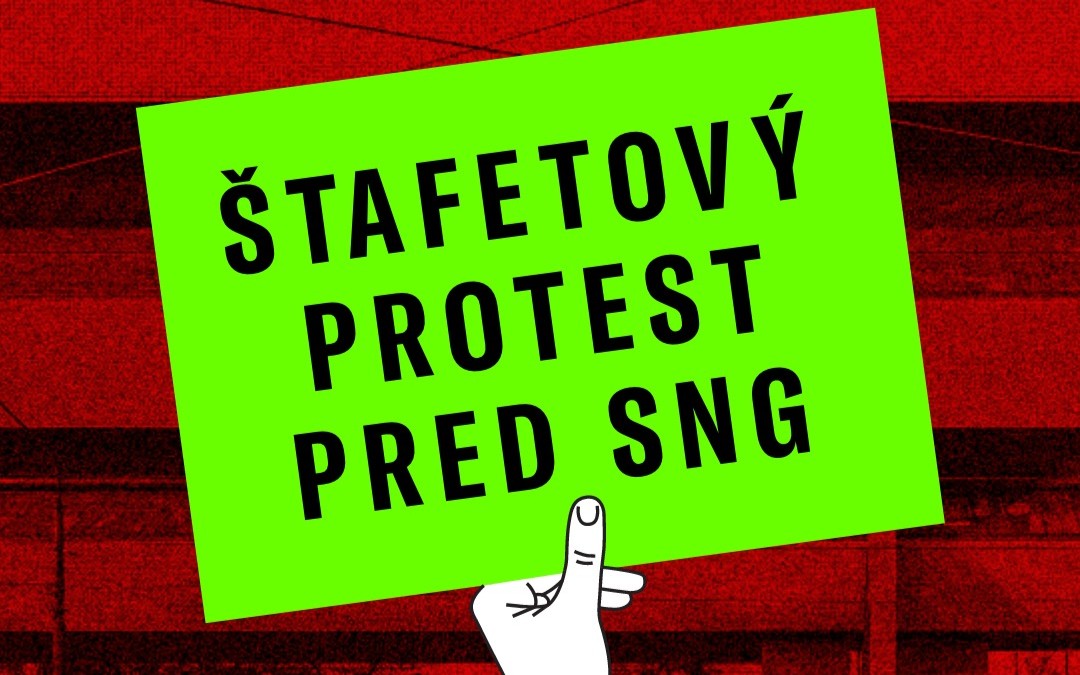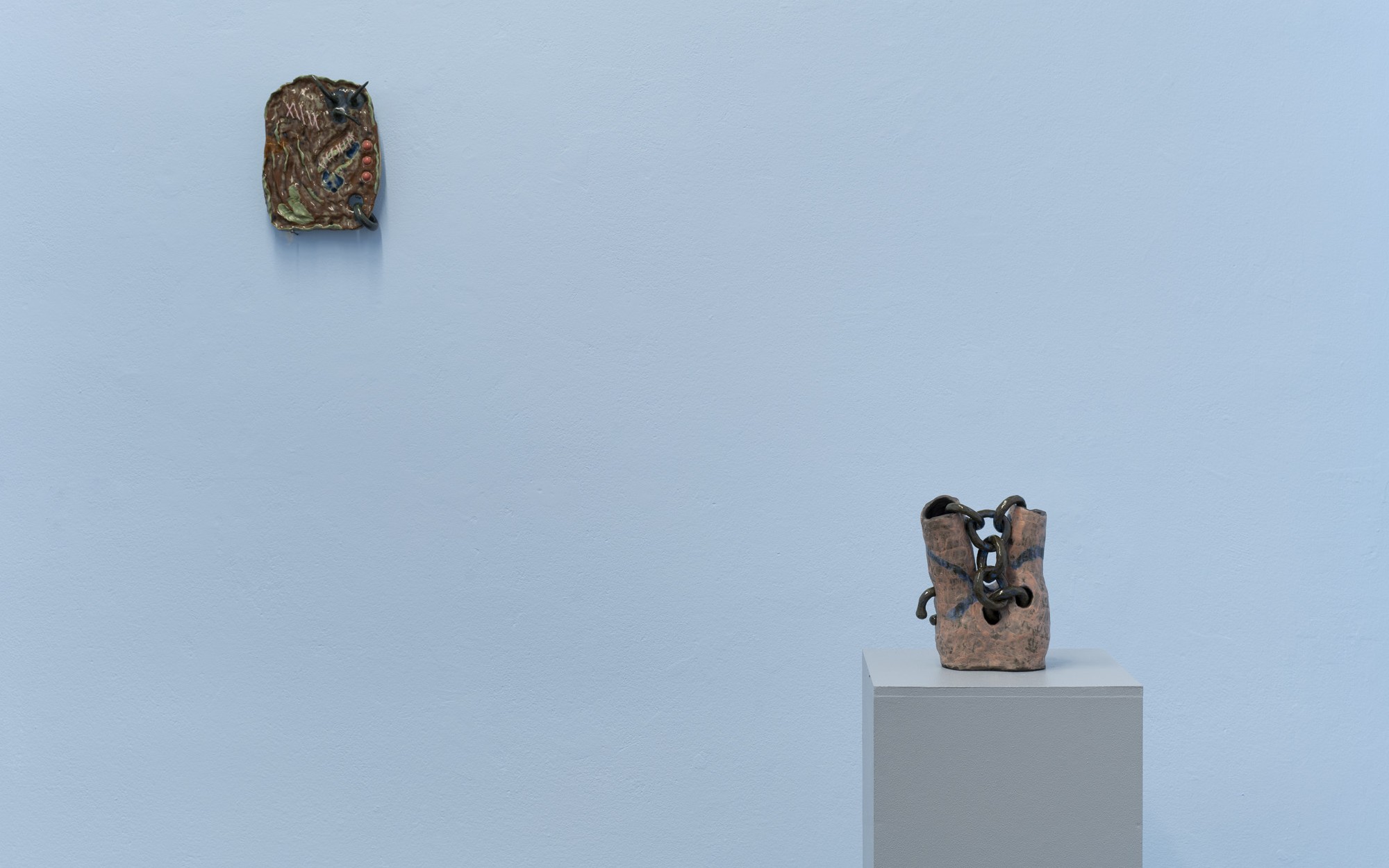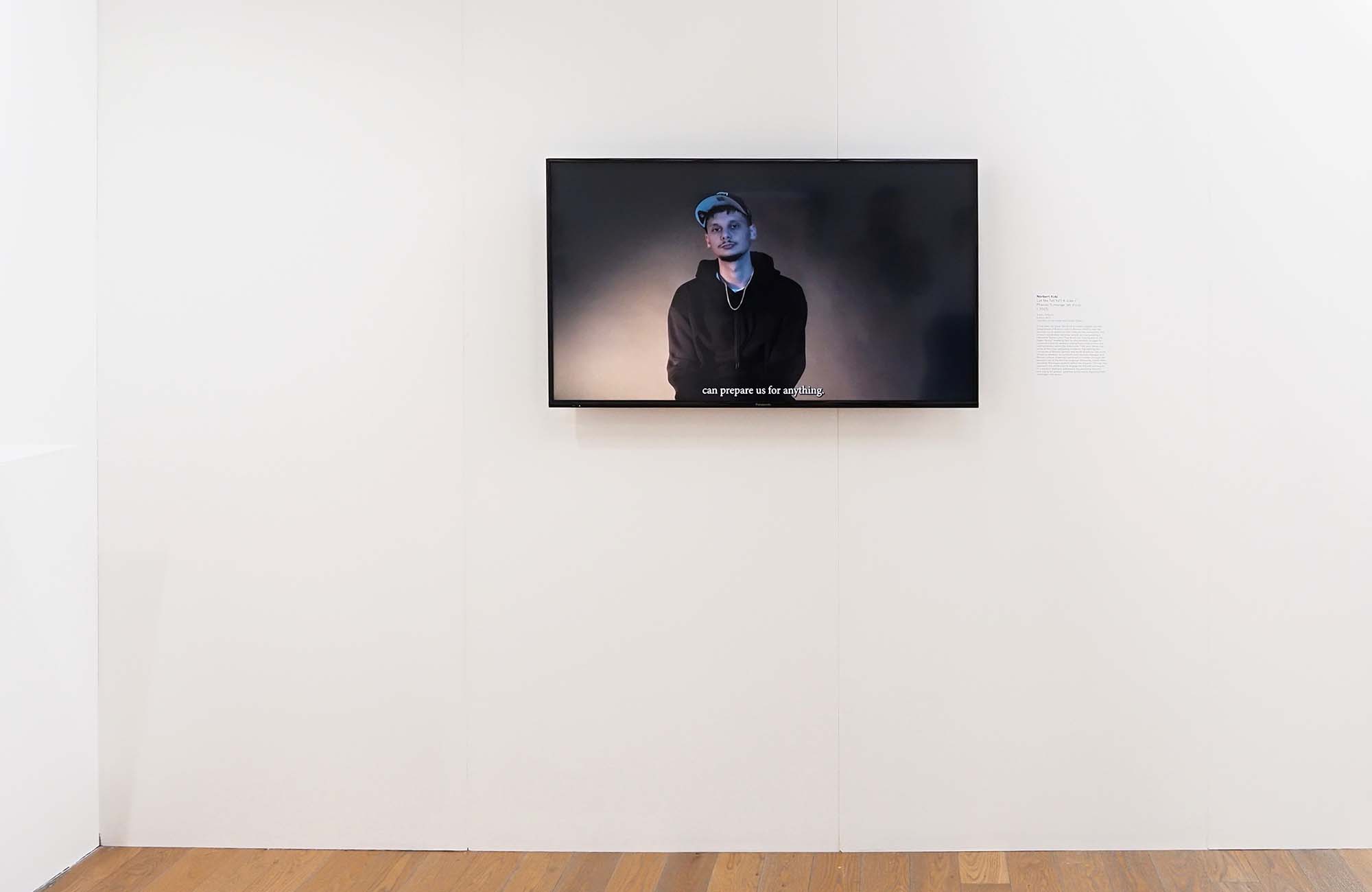
Where Do We Find Our Own Identity?
Report and Review of the Bratislava-Based Gandy Gallery’s Stand at Art Market Budapest
This year, Art Market Budapest focused on Roma Art and organised the SHUKAR.T International Roma Art Festival as a side event throughout Budapest. Visitors could discover contemporary Roma cultural values through professional, cultural and social events.
The art fair, which was held between 18-22 October, featured a wide range of national and international art galleries, as well as the clothing collections by Romani Design, a photography exhibition of Judit Horváth M. and György Stalter in collaboration with Einspach Fine Art & Photography, the artworks of the István Szentadrássy Roma Art Gallery, and the stand of the Gandy Gallery from Bratislava, which has been invited to participate in this year’s art fair.
Browsing through the SHUKAR.T programme booklet published by the international contemporary art fair founded in 2011, there are indeed several noteworthy lectures, roundtables and events, such as the one entitled ”Can Discrimination Ever Be Positive? The Place, Significance and Perspectives of Contemporary Roma Art in the Global Cultural Space”. Also noteworthy was the MBH Bank Art Foundation Awards Ceremony on 19 October, during which the Foundation purchased for its collection the winning contemporary Roma artwork from a previously held competition and the winner was also granted an opportunity for an exhibition.
At the fair on the top floor of the Bálna Budapest, one was able to visit a highlighted block of galleries representing Roma art. In terms of placement, it was fortunate that the Gandy Gallery from Bratislava was next to the Godot Gallery, based in Budapest, with its stand mainly featuring the work of contemporary artist Imre Bukta: the sight of a rusty iron gate decorated with lace and retro pot lids surrealistically evoked the experience of the rural countryside and the difficulties of finding a home, especially in the white cube maze of the art market with items valued at hundreds of thousands if not millions. A few stalls down, another exhibiting artist with a rural theme could be found on the walls of Slovakia’s Dot Gallery. Ivana Šáteková whose embroidered wall hangings and framed folded-edge handkerchiefs feature figures in Slovak folk costume depicted in scenes that show a darker, more hostile side of traditional life.
However, regarding the representation of Roma cultural values, the Gandy Gallery stands out – in fact, one might be disorientated by the works and the stand, as it does not follow the self-branding tendencies of other exhibitors, that are much more sale-orientated, flashy and spectacle-like. The gallery self-defines itself as having a critical approach to the current theme of the fair; it does not therefore represent mainstream, “traditional”[1] contemporary Roma art simply showcasing the works of Roma artists. Rather, the works on display explore Roma identity in a broader social context, as well as the segregated life and housing conditions of Roma families, and the experience of abject poverty in everyday life. Instead of following a trend that has resurfaced in the last few years, the focus here is on raising awareness and educating – with an innocently naive or humorous tone.
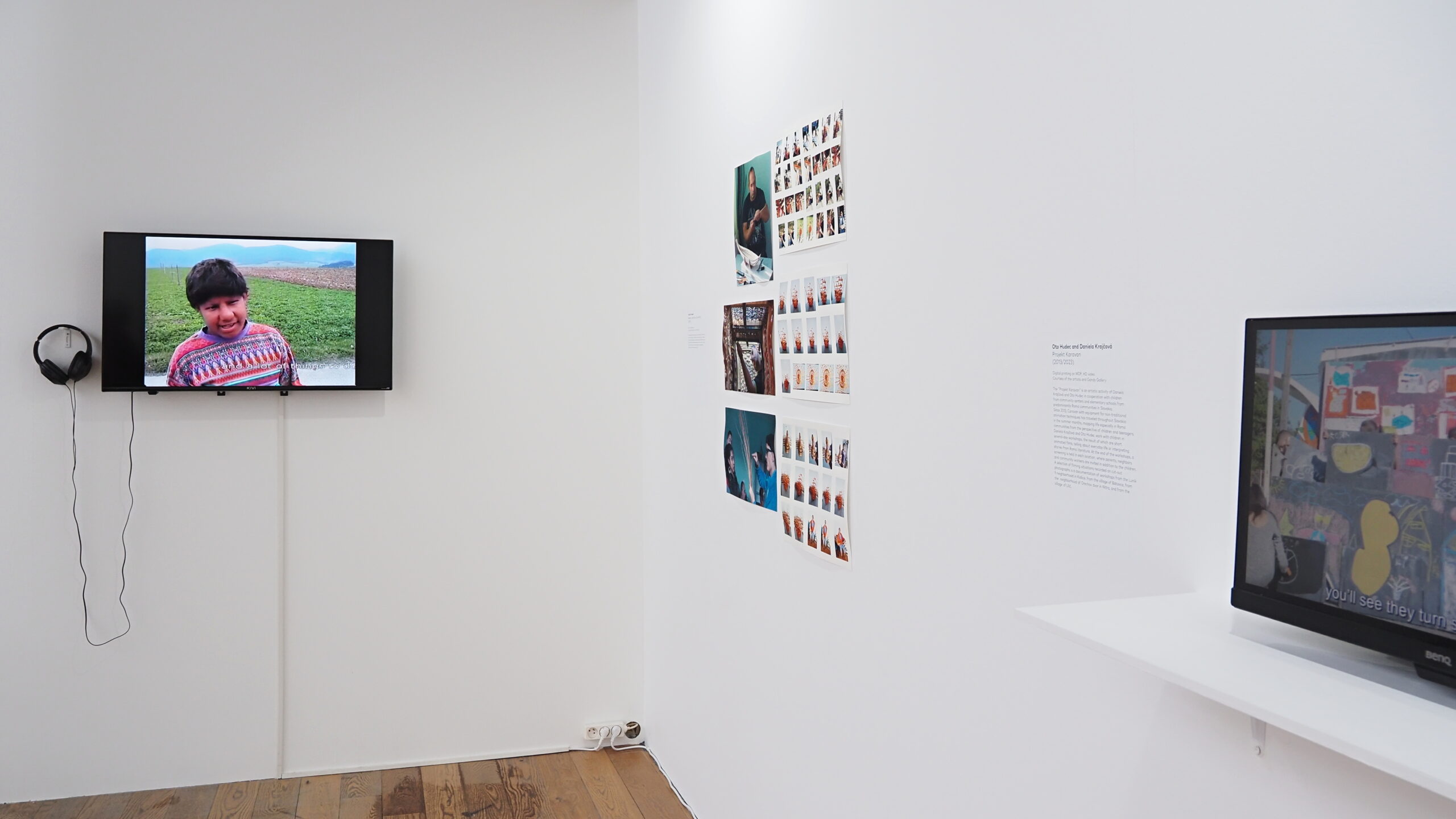
The Gandy Gallery started to represent Roma culture a while back, however, over the years they have moved away from their initial position, as they realised that their highlighting and framework created a situation that differentiated and separated Roma culture.[2] Instead, it is now being democratically channelled into the cultural heritage of Central and Eastern Europe. Here the works on display form a timeline of the gallery’s representational strategy, starting in 2004 with Pavlína Fichta’s sociographic video portrait Čierna Jarka in between (2004), the photo documentation of matalicrasset’s Basketry workshop in Szendrőlád (2009), Oto Hudec’s and Daniela Krajčová’s video of their summer workshops and documentation of shooting scenes cut on MDF sheet (Projekt Karavan, 2013/2023), and finally Norbert Kuki’s Let Me Tell Ya’ll A Joke (2023).
In Čierna’s video, we witness personal stories: two brothers, David and Jarka, talk about their daily lives in abject poverty, mental and social isolation, and their relationships with their other siblings. The documentary style of the video, which alternates between fast and slow-motion shots, is absurd and yet aims to convey the children’s colourful, visual and sensory worldview.
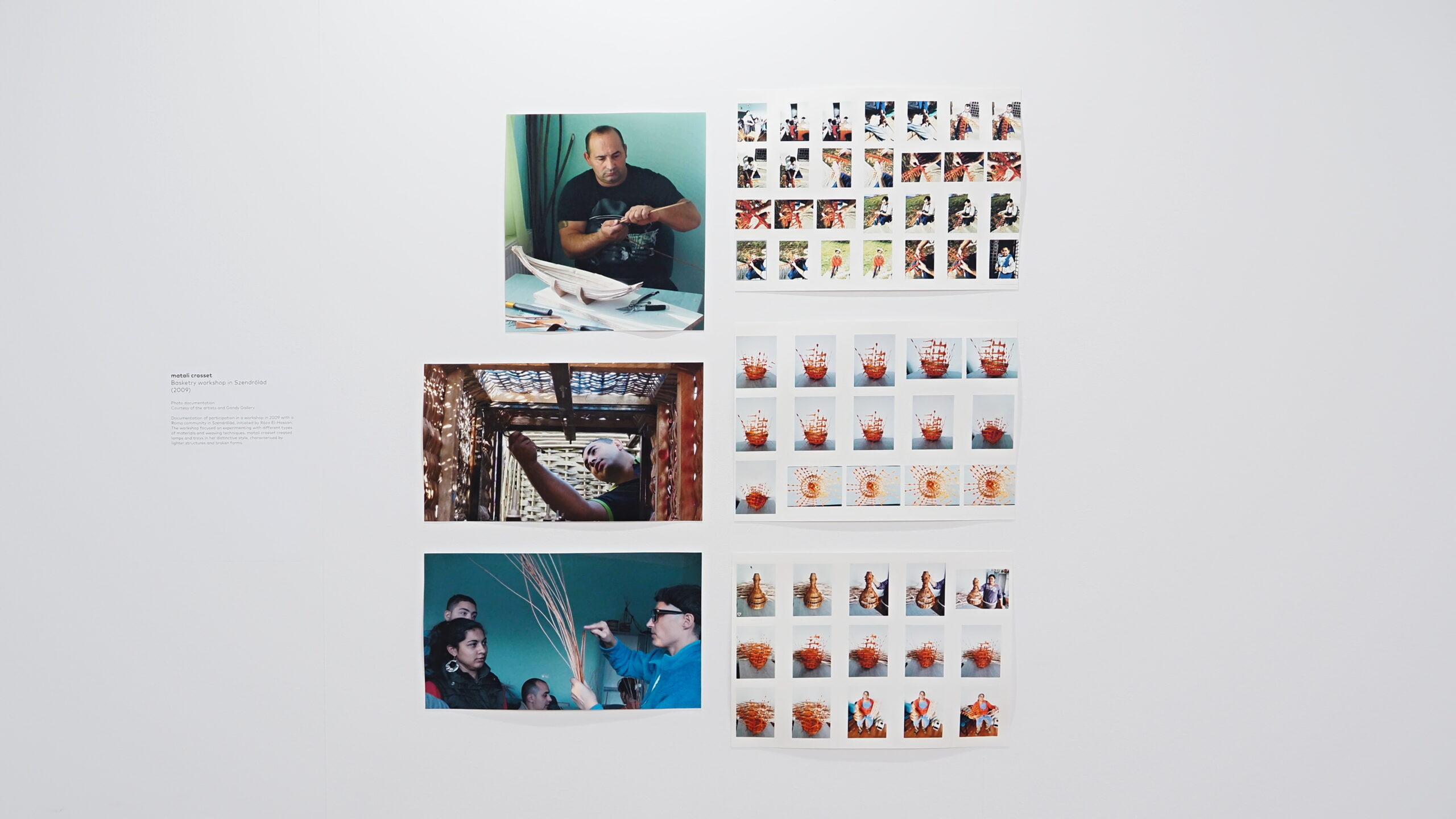
This is followed by a photo documentation of a community weaving workshop held by matali crasset with El-Hassan Roza in Szendrőlád in 2009. The workshop focused on different weaving techniques and on experiencing the materials, which the artist-designer then used to make lamps, among other things. This work, however, seems clumsy compared to the rest of the stand: it seems to have been granted the space it occupies simply because it fits in within the theme. This was reinforced by the small size of the images, which made them difficult to interpret, while the descriptions were rather brief.
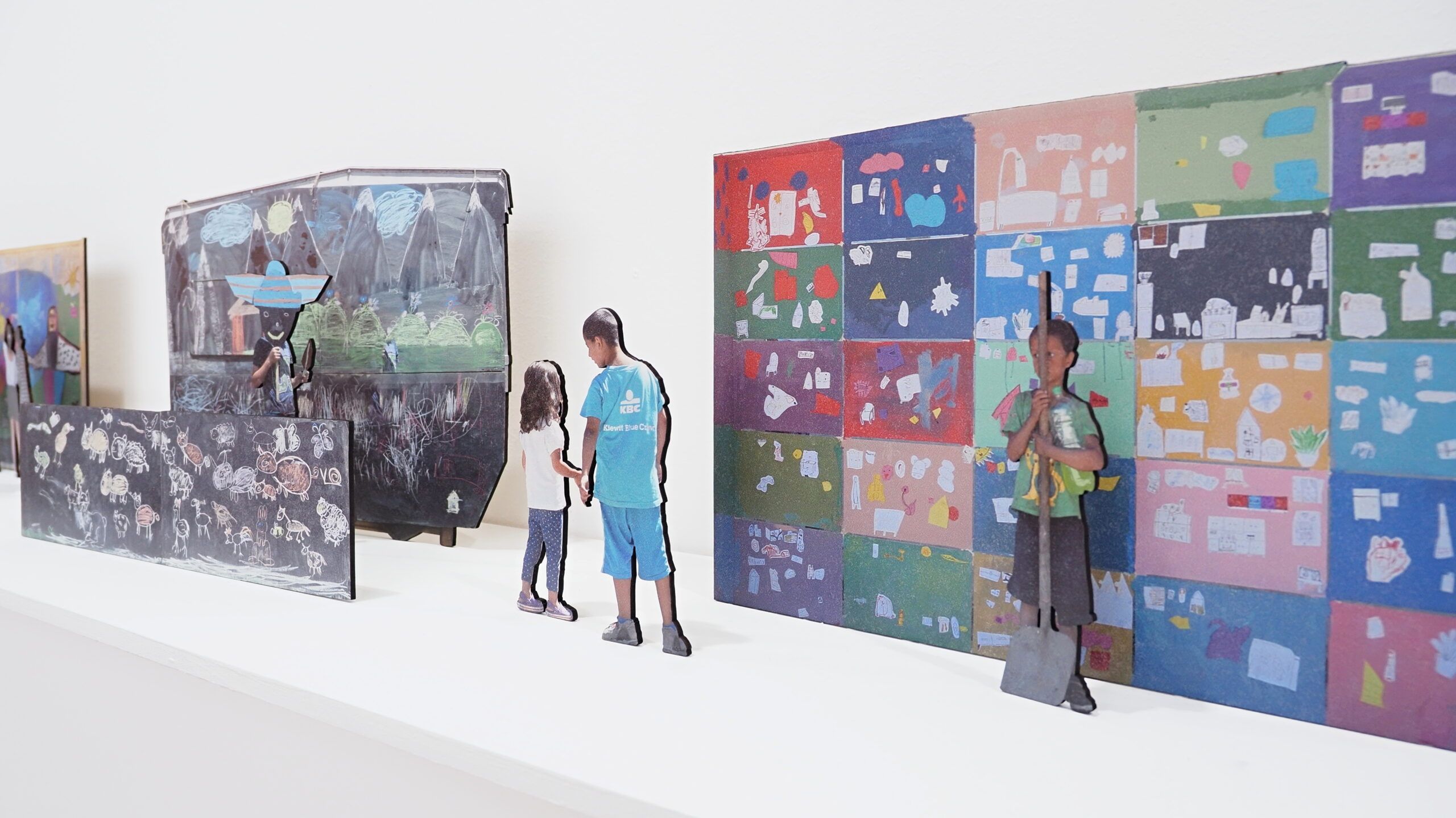
However, as if to compensate for those above, the documentation of Oto Hudec[3] and Daniela Krajčová’s Project Karavan was exhibited. Every summer since 2013, the duo has travelled to different regions of Slovakia to work with primary school children from predominantly Roma communities to produce animated short films, exploring the life of Roma communities through the eyes of children. The resulting short films playfully depict the everyday life of these communities and interpret stories from Roma literature and fairy tales among theatrical stage designs. In addition to their realistic depiction, these miniature cut-out images, exhibited at Art Market Budapest, sometimes resemble a diorama doll’s house or evoke a puppet theatre. But behind these charming children’s toys are images of longing for the distant future or for a different present that leave the viewer with a strong sense of doubt: the children involved will hardly have a chance to experience these dreams in real life.
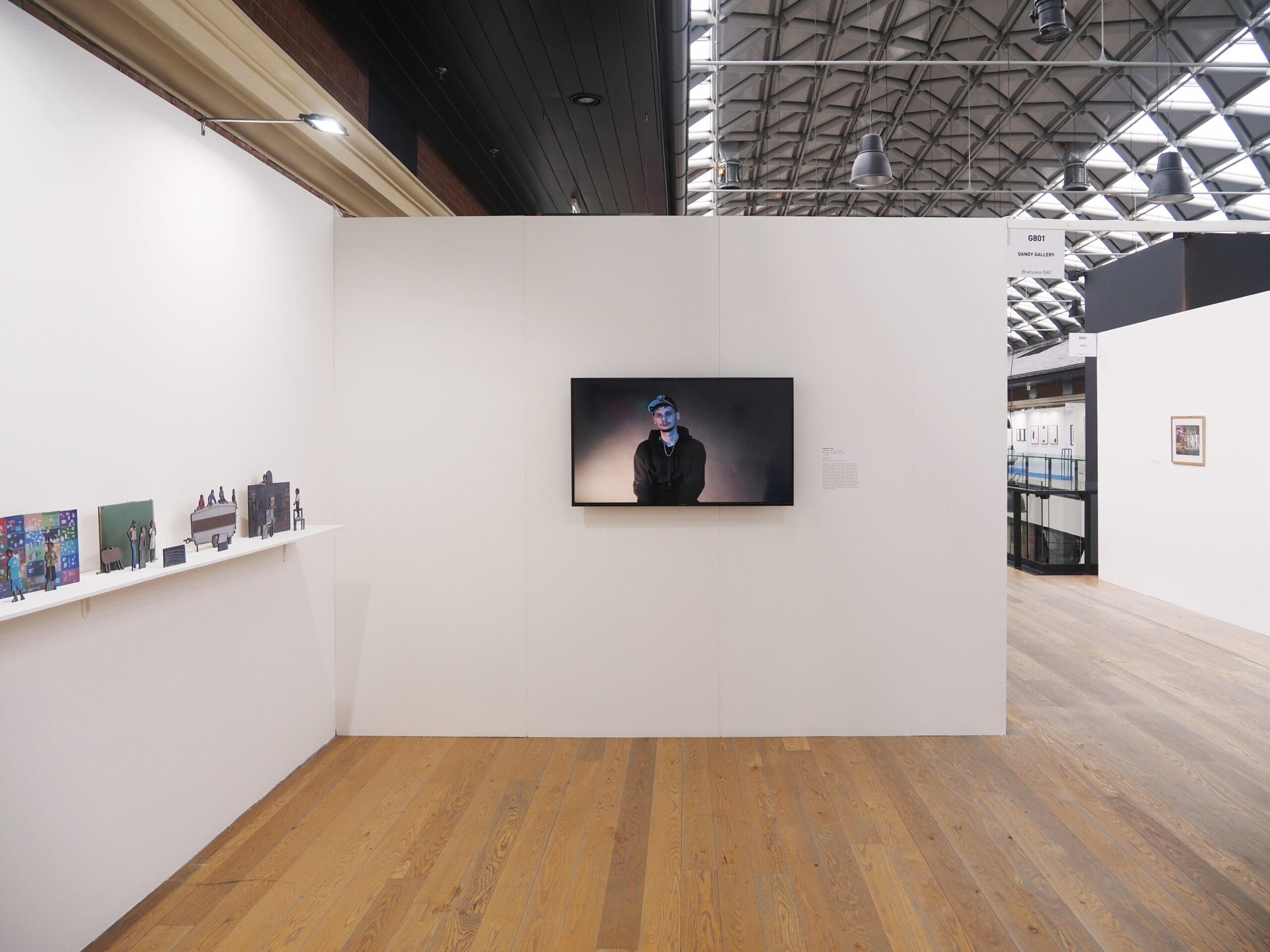
The last work is the provocative crown jewel of the stand, created by the young Norbert Kuki. In this video work, the rapper-like[4] artist poses for his work, for himself and for us, the viewers. He reveals himself with an unabashedly honest confession amid very personal questions that deal with existential questions and doubts, while at the same time, he provocatively captures our voyager gaze during the daringly long 7 minutes and 45 seconds duration of the video in an art fair featuring a multitude of artworks resulting in our attention span dropping to four-second if an artwork is not sufficiently captivating or fancy.
The beginning of the video is very light-hearted; he begins his narrative, a grotesque short story-like account, with a joke to set the stage for the suggestive punchline that follows: “Two Roma argue about who is more of a Roma”. Here, the joke is used to highlight issues, since as the artist explains, he constantly witnesses this competition, for example, when he attends an international meeting of young Roma in Europe, where educated Roma share their knowledge, and discuss cultural differences and the identities that bind them. However, during everyone’s introductions, a similar scenario plays out: after general topics, people tend to stress and compete with the kinds of disadvantages they have faced because of their Roma background with harsher and harsher stories, bidding against each other even using stories that are not their personal experiences.
Then Kuki jumps into the story and switches to a “close-up” narrative: at the meeting, one of the members was talking nonsense about Romungros in southwest Slovakia. It turns out that he is an Oláh, and that in fact, neither party had ever met with a member of the other community. This brings us back to the joke told at the beginning of the video when the mentioned speakers compete on the most basic Roma topics: food and recipes. The video thus highlights, through small, personal stories of stereotypes (police measures against Roma) and general difficulties (finding a job after graduation), the almost impossible task of constructing and accepting one’s Roma identity.
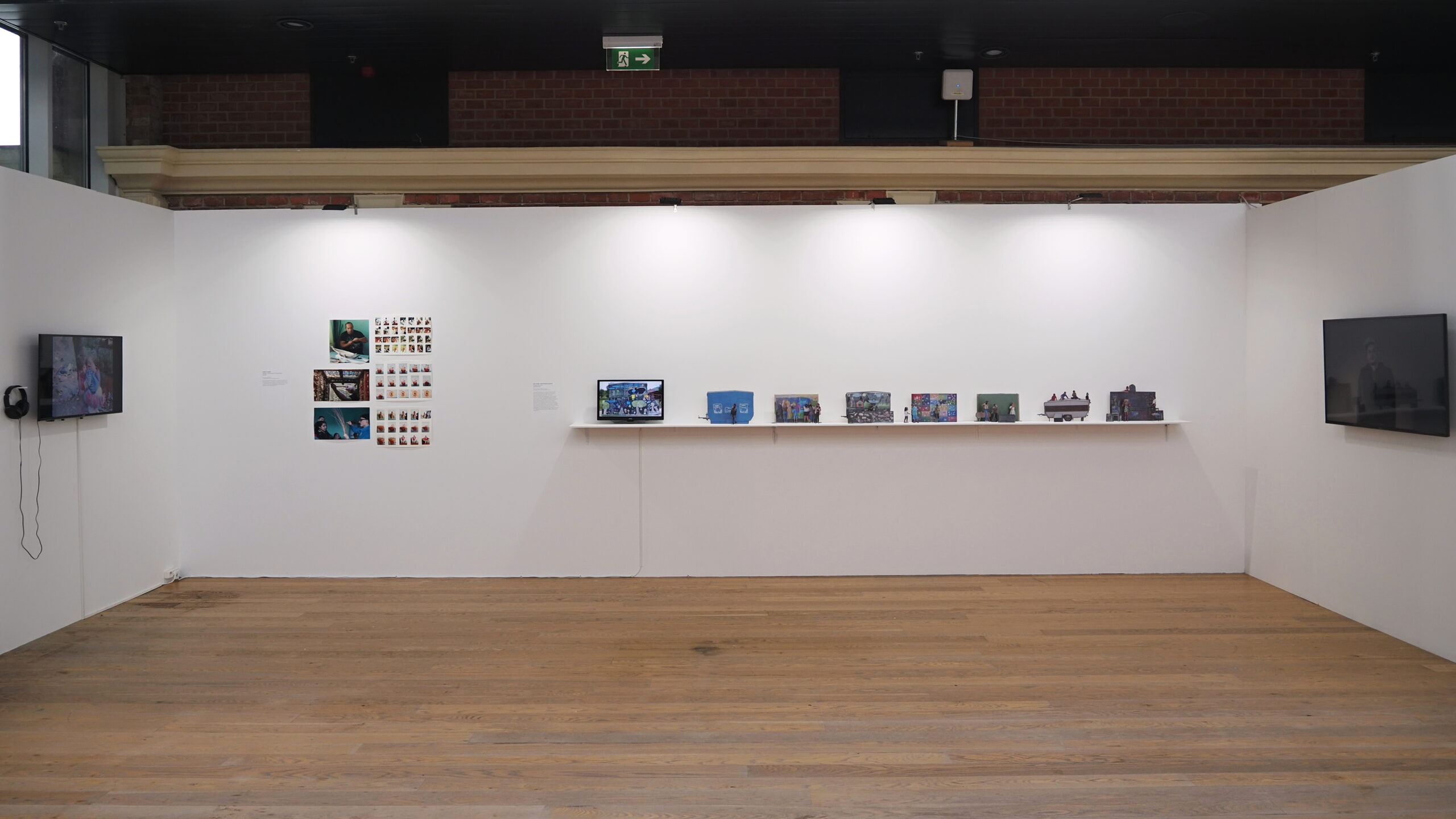
Norbert Kuki also mentions stories that raise attention to the diversity of the Roma community and confrontations within it, and how those can be resolved within personal relationships. The artist, however, further describes a conflict zone around identity: once interpersonal conflicts are resolved, then come the negative prejudices of broader society, as well as the Romas’ inner need to conform to their community and the traditions deeply rooted in their culture. According to Kuki, Romani Studies is also misleading in academic discourse, as it is not about Roma people, but about the discourse regarding them,[5] as well as idealised Oláh and Romungro people, and more broadly about idealised “real Roma”, who don’t exist anymore, as Roma are beginning to forget their language and cultural roots. According to the video, Norbert Kuki also met people who were looking for these “real Roma” in Poland. So, the real question is not who is more of a Roma, but who is a real Roma and who should define this. The Roma themselves, the Roma studies, or broader society? According to the artist, this is a big joke: is he not Roma because he does not correspond to an idealised image since he has forgotten certain cultural roots? How could he not be Roma regardless?
Norbert Kuki’s video work offers a collective lesson to the unsuspecting visitor: how can one form a narrative identity when surrounded by difficult circumstances? The question needs to be unpacked: for over thirty years, narrative psychology has been concerned with the idea that our identity is not given but influenced by the way we tell stories of ourselves within a subjective framework. Of course, as we change, so do the stories change that we tell about ourselves. We process change by inscribing and embedding it into our previous story, so we have a coherent self-image, but more importantly, so we consider our events to be meaningful.[6]
However, we are currently experiencing signs of a narrative identity crisis: we cannot tell our own story because we do not see it to be valuable enough. After all, what can have a lasting value in our automated, accelerated world, where we are barely able to sustain our attention and immerse ourselves in anything? That is why Norbert Kuki’s current video is radically provocative. The artist does not create beautiful and easily consumable artworks, not even to exhibit at such an art fair. Instead, he takes on the responsibility of self-representation with his face, since, as the video concludes with his last sentence; ”But if I stop talking, who will understand us.”
[1] For a concise overview, read this.
[2] Tímea Junghaus, art historian, curator and cultural activist, who, as the main organiser of the Roma Pavilion at the 2007 Venice Biennale, commented on Shukar!, an exhibition held in New York in 2010 featuring Roma women painters.
[3] Hungarian audiences have met Oto Hudec before, for example as one of the artists of the Ludwig Museum’s 2020/2021 exhibition SLOW LIFE: Radical Practices of the Everyday.
[4] It is particularly noteworthy that in the various registers of the contemporary art scene, this style is nearly absent, as the tastes of the hierarchical, privileged, white, middle-class class continue to predominate.
[5] The critical self-reflection of Zoli Beck, the frontman of 30Y and adjunct professor of the Department of Romology and Sociology of Education at the Faculty of Humanities of the University of Pécs, in the podcast of MANK’s podcast ”I Could Do This Too?!”.
[6] For an overview, see here.
Translation: Martha Kicsiny

